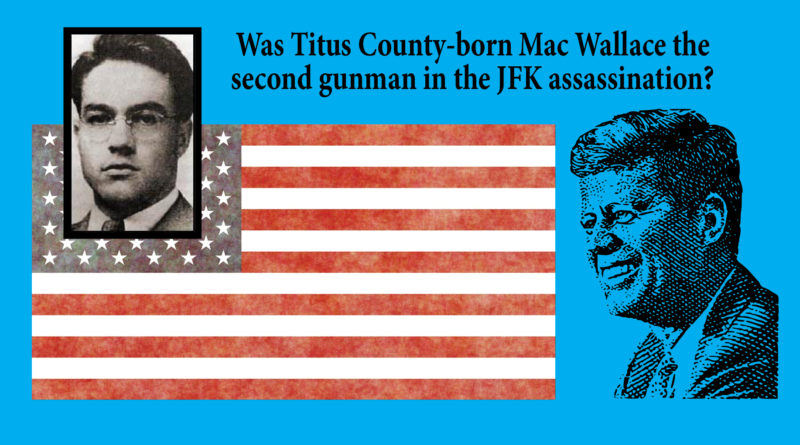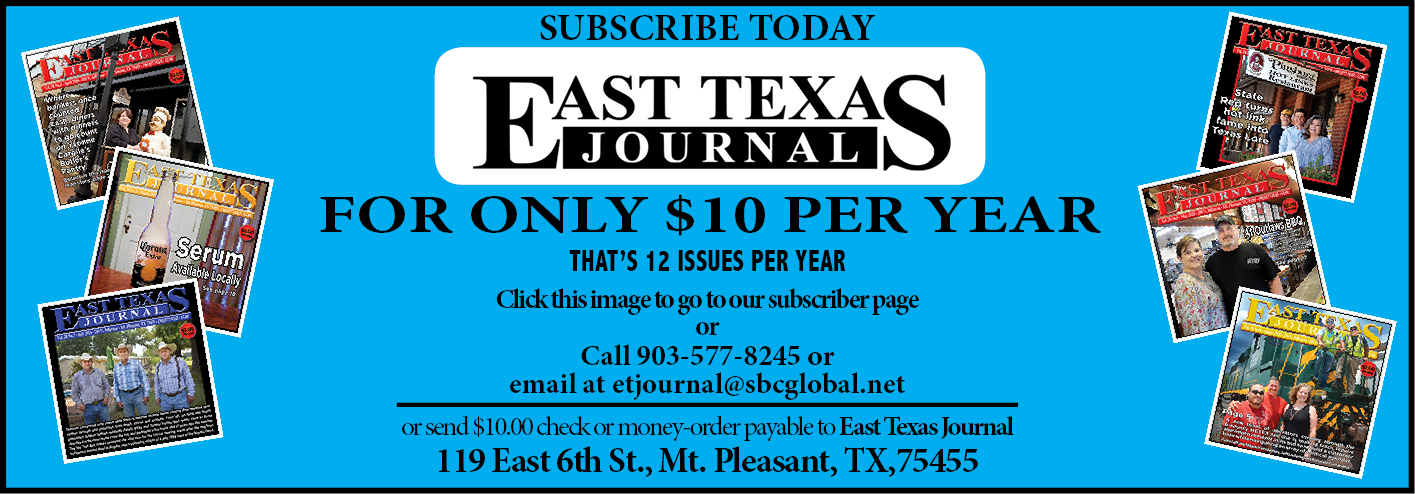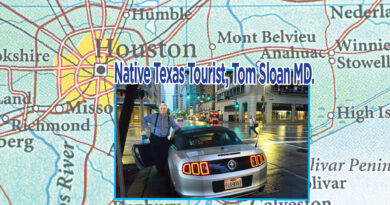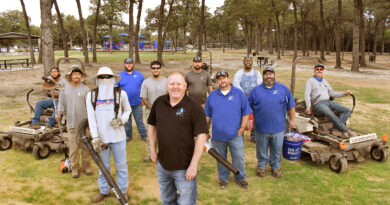Was Titus County-born Mac Wallace the second gunman in the JFK assassination?
Reprinted from the May 2012 East Texas Journal
By HUDSON OLD
Journal Publisher
PITTSBURG, TEXAS– Her following of threads of conjecture based on conspiracy theories within conspiracy theories led a writer backed by London-based Bloomsbury Publishing’s stateside subsidiary into the winter night that Mac Wallace died in a one-car accident three miles south of town.
To get a taste of the fixation of JFK assassination theorists on Titus County native Malcolm Wallace, a cyberspace search of his name generates millions of hits.
Most infamously, in his 2003 book Blood, Money and Power: How LBJ Killed JFK, author Barr McClellan concludes that Mac Wallace was the second gunman in the assassination. In a decade since it was written, rafts of evidence cited in crafted conclusions have been de-bunked.
Getting into the story of Mac Wallace raises more questions than answers, said Temple University professor and writer Joan Mellen whose frustration at the moment centers around the mysterious way in which so many threads connected to his life have evaporated.
She’s a demanding biographer with a passion for facts, film director Oliver Stone write in his review of her tale of the life of New Orleans DA Jim Garrison. Opinions differ, but many believe the feds blocked the Orleans Parish prosecutor’s attempt to unravel evidence pointing to a conspiracy in the Kennedy assassination.
“Like the subject of her book, Joan Mellen has toiled away, driven by nothing more than her own passion for the truth,” Mr. Stone wrote of her mammoth account of Jim Garrison’s life.
Now getting into the tale assigned by her publisher, she contacted Camp County Genealogical Society member Glenda Kinard, a woman likewise driven by research.
She’s a retired seamstress with a lively 40-year track record for searching archives.
“I’ve got more time now than I’ve ever had for my work and whether I’m researching my family or someone else’s I learn so much about places and the times of the people,” she said.
Going back more than 40 years to the January 7, 1971 accident in which Mr. Wallace died, so far Mrs. Kinard has found but a photo and caption in a yellowed edition of the Pittsburg Gazette.
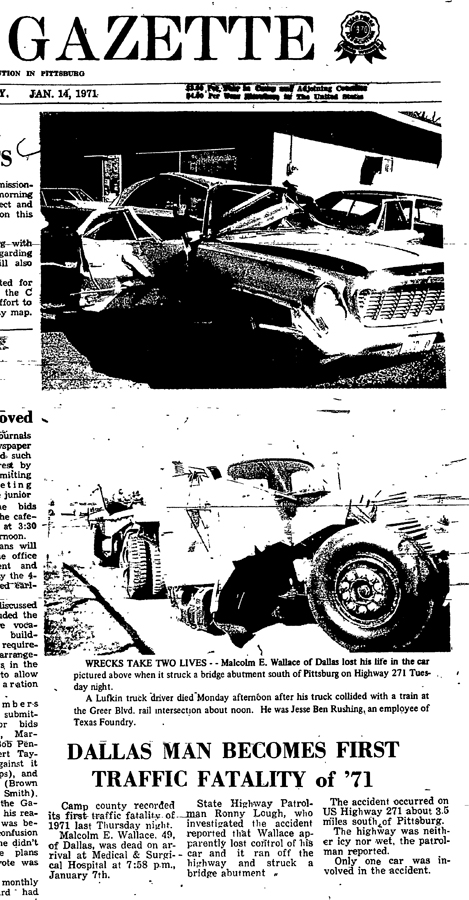
A January 10 obit in the Dallas Morning News said he was born in Titus County, had worked as a purchasing manager for Ling-Temco-Vought and had lived in Dallas and California. He was buried north of Mt. Pleasant at Nevil’s Chapel Cemetery.
“There was so much more to the man,” Ms. Mellen said. “He was a farmer’s son, a man from humble origins. As a young Marine he was seriously injured and received a medical discharge before enrolling at the University of Texas.
“He was elected President of the student body,” she said. “While he was working on his doctorate at Columbia University he taught at Long Island University, the University of Texas and the University of North Carolina.
“He had charisma and he was a leader,” she said. “In 1944 he led a protest march of 8,000 students in a failed campaign to have the university’s president re-instated. The board of regents had fired Homer P. Rainey, who was an outspoken proponent of the American Socialist Party.”

While the party’s liberal beliefs fell under fire in the Cold War, in 1944 the United States and the Soviet Union were allies in the war against Nazi tyranny. For a native born on a Titus County farm in the era before social legislation of the new Deal era, the socialist vision of a utopian society held evident appeal to a military veteran aspiring to promote social equality.
It was while he was teaching that Malcomb Wallace was introduced to Austin attorney Edward Clark and Texas Senator Lyndon Johnson, connections that altered the course of his life.
In October, 1950, 31-year-old Mac Wallace went to work for the U.S. Department of Agriculture in Texas, an event setting the stage for lurid twists and the conclusions of Blood, Power and Money that Mr. Wallace became a hit man implicated in a string of murders leading up to the planning of the JFK assassination in Dallas in November, 1963.
One documented dark turn occurred within a year.
In October, 1952 Mr. Wallace was charged with the murder of John Kinser, the owner of a miniature golf course in Austin. Written in 2003, Blood, Power and Money submits other accounts linking him to the murder of a USDA worker daring to oppose Billie Sol Estes in an under-the-table attempt to secure cotton allotments.
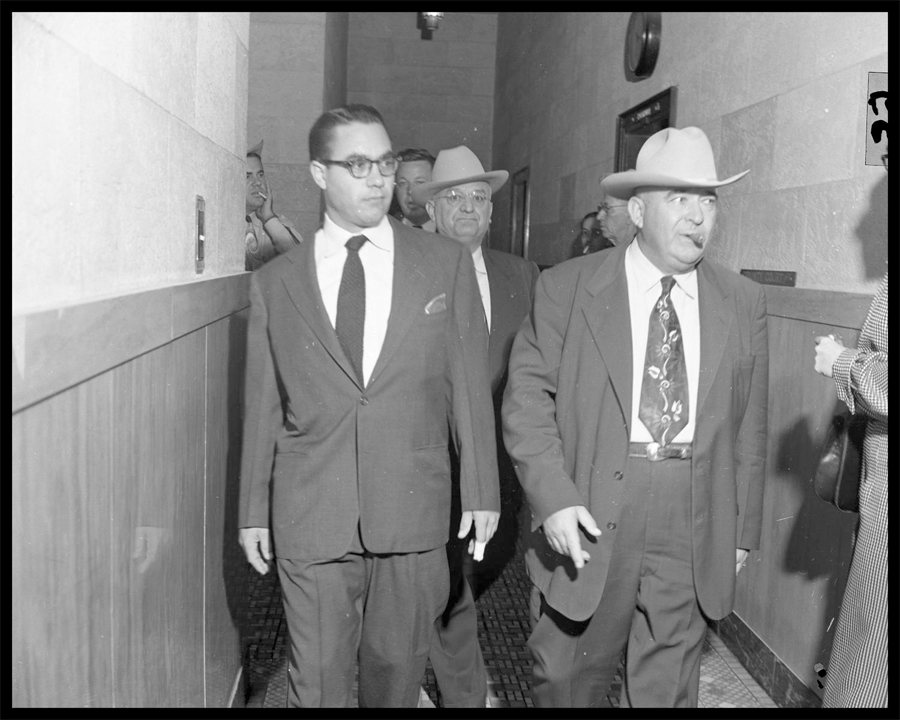
Bond hearing for Malcolm E. “Mac” Wallace. He was accused of murdering golf pro Douglas Kinser at the Lamar Pitch n Putt.
Researching the Kinser case, Ms. Mellen hit a sizeable snag as she began working to document the account of his murder trial in Travis County.
According to Barr McClellan, LBJ’s sister, Josefa, was having affairs with both Mr. Wallace and Mr. Kinser. At trail, Mr. Wallace’s attorney, John Cofer, readily admitted his client’s guilt but claimed it was an act of revenge and that Mr. Kinser was having an affair with Mr. Wallace’s wife.
Mr. Wallace was convicted but sentenced to just five years in prison by Judge Charles O. Betts who then suspended the sentence.
Searching for evidence of allegations that justice was rigged and perverted, Ms. Mellen to date has been unable to find any records of testimony.
“I don’t believe they exist,” she said.
She’s not the first to question the tidy manner in which pieces of Mr. Wallace’s life have been puzzled together.
Specifically, ties linking then Vice President Johnson, Mr. Clark and Mr. Wallace to the Kennedy assassination aren’t so clear cut, said James Tague, author of Truth Witheld.
“The star witness in those accounts was Billie Sol Estes, a convicted swindler and a known con man,” Mr. Tague told the Journal in a 2005 interview. “The man’s a professional liar.”
A witness to the Kennedy assassination, Mr. Tague moved to Pittsburg after retiring from life as a Dallas car salesman and dealer.
He moved to the country south of town and in a surreally-coincidental twist, lived west of old U.S. 271, about a mile from the place Mac Wallace was killed.
Stranger still, those concluding that a second gunman was involved in the Kennedy assassination almost universally cite circumstances surrounding Mr. Tague’s testimony in the Warren Commission’s investigation of the shooting.
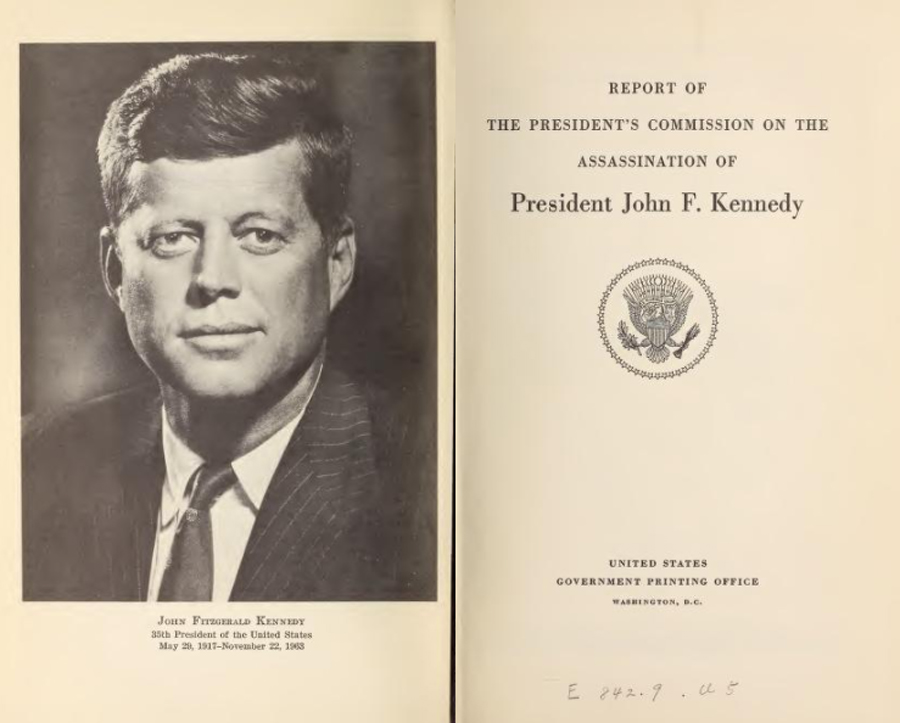
Here’s what happened:
“I was headed into town to meet a cute redhead for lunch,” Mr. Tague said. He was running late for a date with the girl he soon married, held up by a customer at Chuck Hutton Dodge on Lemmon Avenue.
As he approached Dealy Plaza he hit gridlock traffic, coming to a stop just beneath the triple overpass, right beside the grassy knoll where it’s been long conjectured a second gunman awaited the passing of the Presidential motorcade.
Exiting his car, Mr. Tauge had just walked from beneath the overpass when the first shot was fired. He felt a sting on his cheek. He ducked behind a bridge abutment. Gunfire echoed. People screamed. The motorcade sped away.
He saw a motorcycle cop stop, draw his gun and run up the grassy knoll. He moved toward the activity and ran into Officer Clyde Haygood as he returned to his motorcycle. A man running by reported seeing shots fired by a gunman from a window high in the Texas School Book Depository.
Officer Haygood radioed dispatch, asked that the depository be sealed off and noting blood on Mr. Tague’s cheek he reported a bystander’s being slightly wounded. A deputy joined them – the three walked to the place Mr. Tague believed he was standing when the shooting began.
In his testimony before the Warren Commission, Mr. Tague said: “We walked fifteen feet away when this deputy sheriff said, ‘Look, here on the curb.’ There was a mark in the curbing quite obviously made by a bullet and it was very fresh.”
Considering the freshly broken concrete, Mr. Tague gave a statement saying he believed he’d been hit by a shard of concrete splintered from the curb by the impact of a stray shot.

For all time since, the critical question about his wound has become which shot caused it. Was it one that missed the presidential limo and struck the curb at his feet or one that fragmented when it hit either Kennedy or Texas Governor John Conally, who was also wounded?
“Naturally, I watched all the newspapers the next day,” Mr. Tague said. “There wasn’t anything about a missed shot. Later, a photo shot by Tom Dillard with the Dallas Morning News surfaced in which he’s pointing with a pen to damage on the curb where I was standing.”
Seven months later, he read with interest a news account of the Warren Commission wrapping up its investigation. Considering evidence submitted by the FBI, the commission accounted for each of three shots without reference to a shot striking the curb.
Curious about the possibility of a fourth shot striking the curb, curious about what had become of the statement he gave Dallas police, Mr. Tague called a then-Dallas reporter named Jim Leherer.
“He immediately wanted to write a story about the possibility of a fourth shot,” Mr. Tague said. “I said it was okay with me as long as he didn’t use my name. The story was on the wire within an hour and within another hour Jim Leherer had called me back to advise me he’d been contacted by members of the Warren Commission demanding to know who I was.”
Mr. Tague was summoned and at 8:15 p.m. July 23, 1964, found himself being questioned by Wesley J. Liebeler, assistant counsel to the Warren Commission.
If physical evidence of Mac Wallace’s involvement hinges on a second gunman firing a fourth round, on page 555 of the Warren Commission transcript, counsel asked the critical question, “Did you hear three shots?”
Mr. Tague: “I heard three shots; yes sir.”
A moment later, the questions took a turn suggesting agents had been keeping tabs on Mr. Tague after he described where he’d been standing when he believed he was hit by shards of concrete.
Mr. Liebeler: “I understand that you went back subsequently and took some pictures of that area, isn’t that right?”
Mr. Tague: “Pardon?”
Mr. Liebeler: “I understand that you went back subsequently and took some pictures of the area.
Mr. Tague: “Yes; about a month ago.”
Mr. Liebeler: “With a motion picture camera?”
Mr. Tague: “Yes; I didn’t know anybody knew about that . . . my wife and I were going to Indianapolis. This is the home of my parents. I was taking some pictures of the area to show them.”
Mr. Liebeler: “Did you look at the curb at that time to see if the mark was still there?”
Mr. Tauge: “Yes.”
Mr. Liebeler: “Was it still there?”
Mr. Tague: “Not that I could tell.”
Mr. Tague’s testimony didn’t alter the commission’s preliminary findings.

Thirty five years later, in July, 1998, Mac Wallace was again linked to the assassination, this time by a story in Fair Play Magazine based on researcher Walt Brown’s presentation of “new data” showing a “14-point match between Wallace’s Texas Department of Public Safety fingerprint card and a previously unidentified print found on a box in the ‘sniper’s nest’ on the sixth floor of the Texas Schoolbook Depository,” from which the Warren Commission concluded Lee Harvey Oswald had fired the shots that killed the President and wounded Governor John Conally.
In hiring a genealogist, Ms. Mellen’s work reaches beyond the sensational. Her interest is a view of the life of Malcolm Wallace from other perspectives, to learn something about the way his family lived, to find anyone left who might have known them before they left Titus County in 1925.
Thorough work requires taking long shots.
She wonders what things shaped his life, what compelled his father, Alvis Wallace, a Titus County farmer, to move the family to Dallas. She wonders who knew Mac Wallace as a college student when he fought in vain to rescue the career of a university president. Did he agree with the man’s views? Or might have have found procedural fault with the manner of his dismissal and been defending due process? What drove the man?
Years ago now, and to this day, so many lives have been and continue being impacted by association with Mac Wallace. Ms. Mellen has already run into doors closing at the edge of the story, a tale of threads, some seeming almost to fit too conveniently while others appear to have been burned away.
She is convinced that the dark tales surrounding him begin with his association with LBJ.
“The truth becomes a matter of finding anyone remaining and willing to help,” Ms. Mellen said. “I can see how the child born in an agrarian time to a rural farming family in Titus County might have seen LBJ as the path to a good future, a Faustian bargain. Leaving aside violence, the story may be one of how difficult it is to maintain integrity.”
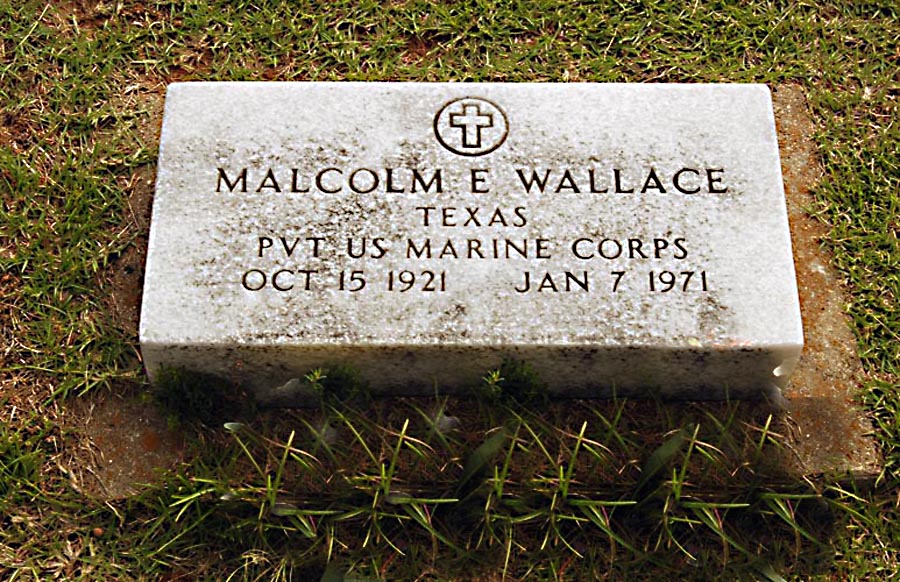
Drawn from German legend, Faust is a brilliant scholar who gives up his moral integrity for power and success, a once well-intended character who makes a deal with the devil.

